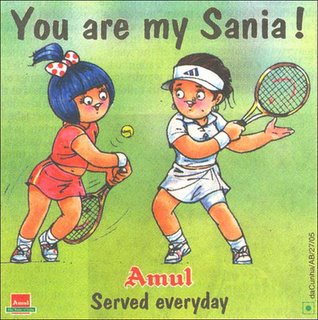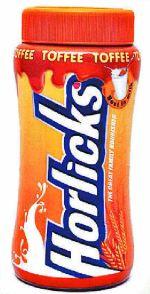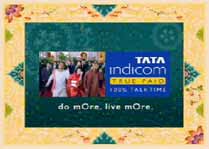
Brand : Amul
Agency DaCunha Associates
Baseline : Taste of India
Amul has used the hoardings and advertising to perfection. Taking cues from new films, celebrities, the creatives are fun to watch. More over Amul has sticked with the creative messages throughout.
They like to call it as TOPICALS
Given below is the history of Amul TOPICALS from their site
http://amul.comAmul Butter Girl
(Edited from an article by Mini Varma published in The Asian Age on March 3, 1996The moppet who put Amul on India's breakfast table )
50 years after it was first launched, Amul's sale figures have jumped from 1000 tonnes a year in 1966 to over 25,000 tonnes a year in 1997. No other brand comes even close to it. All because a thumb-sized girl climbed on to the hoardings and put a spell on the masses.
Bombay: Summer of 1967. A Charni Road flat. Mrs. Sheela Mane, a 28-year-old housewife is out in the balcony drying clothes. From her second floor flat she can see her neighbours on the road. There are other people too. The crowd seems to be growing larger by the minute. Unable to curb her curiosity Sheela Mane hurries down to see what all the commotion is about. She expects the worst but can see no signs of an accident. It is her four-year-old who draws her attention to the hoarding that has come up overnight. "It was the first Amul hoarding that was put up in Mumbai," recalls Sheela Mane. "People loved it. I remember it was our favourite topic of discussion for the next one week! Everywhere we went somehow or the other the campaign always seemed to crop up in our conversation."
Call her the Friday to Friday star. Round eyed, chubby cheeked, winking at you, from strategically placed hoardings at many traffic lights. She is the Amul moppet everyone loves to love (including prickly votaries of the Shiv Sena and BJP). How often have we stopped, looked, chuckled at the Amul hoarding that casts her sometime as the coy, shy Madhuri, a bold sensuous Urmila or simply as herself, dressed in her little polka dotted dress and a red and white bow, holding out her favourite packet of butter.
For 30 odd years the Utterly Butterly girl has managed to keep her fan following intact. So much so that the ads are now ready to enter the Guinness Book of World Records for being the longest running campaign ever. The ultimate compliment to the butter came when a British company launched a butter and called it Utterly Butterly, last year.
It all began in 1966 when Sylvester daCunha, then the managing director of the advertising agency, ASP, clinched the account for Amul butter. The butter, which had been launched in 1945, had a staid, boring image, primarily because the earlier advertising agency which was in charge of the account preferred to stick to routine, corporate ads.
 One of the first Amul hoardings
One of the first Amul hoardings
In India, food was something one couldn't afford to fool around with. It had been taken too seriously, for too long. Sylvester daCunha decided it was time for a change of image.
The year Sylvester daCunha took over the account, the country saw the birth of a campaign whose charm has endured fickle public opinion, gimmickry and all else.
The Amul girl who lends herself so completely to Amul butter, created as a rival to the Polson butter girl. This one was sexy, village belle, clothed in a tantalising choli all but covering her upper regions. "Eustace Fernandez (the art director) and I decided that we needed a girl who would worm her way into a housewife's heart. And who better than a little girl?" says Sylvester daCunha. And so it came about that the famous Amul Moppet was born.That October, lamp kiosks and the bus sites of the city were splashed with the moppet on a horse. The baseline simply said, Thoroughbread, Utterly Butterly Delicious Amul,. It was a matter of just a few hours before the daCunha office was ringing with calls. Not just adults, even children were calling up to say how much they had liked the ads. "The response was phenomenal," recalls Sylvester daCunha. "We knew our campaign was going to be successful."
For the first one year the ads made statements of some kind or the other but they had not yet acquired the topical tone. In 1967, Sylvester decided that giving the ads a solid concept would give them extra mileage, more dum, so to say. It was a decision that would stand the daCunhas in good stead in the years to come.
In 1969, when the city first saw the beginning of the Hare Rama Hare Krishna movement, Sylvester daCunha, Mohammad Khan and Usha Bandarkar, then the creative team working on the Amul account came up with a clincher -- 'Hurry Amul, Hurry Hurry'. Bombay reacted to the ad with a fervour that was almost as devout as the Iskon fever.
That was the first of the many topical ads that were in the offing. From then on Amul began playing the role of a social observer. Over the years the campaign acquired that all important Amul touch.
India looked forward to Amul's evocative humour. If the Naxalite movement was the happening thing in Calcutta, Amul would be up there on the hoardings saying, "Bread without Amul Butter, cholbe na cholbe na (won't do, won't do). If there was an Indian Airlines strike Amul would be there again saying, Indian Airlines Won't Fly Without Amul.
There are stories about the butter that people like to relate over cups of tea. "For over 10 years I have been collecting Amul ads. I especially like the ads on the backs of the butter packets, "says Mrs. Sumona Varma. What does she do with these ads? "I have made an album of them to amuse my grandchildren," she laughs. "They are almost part of our culture, aren't they? My grandchildren are already beginning to realise that these ads are not just a source of amusement. They make them aware of what is happening around them."
Despite some of the negative reactions that the ads have got, DaCunhas have made it a policy not to play it safe. There are numerous ads that are risque in tone.
"We had the option of being sweet and playing it safe, or making an impact. A fine balance had to be struck. We have a campaign that is strong enough to make a statement. I didn't want the hoardings to be pleasant or tame. They have to say something," says Rahul daCunha.
"We ran a couple of ads that created quite a furore," says Sylvester daCunha. "The Indian Airlines one really angered the authorities. They said if they didn't take down the ads they would stop supplying Amul butter on the plane. So ultimately we discontinued the ad," he says laughing. Then there was the time when the Amul girl was shown wearing the Gandhi cap. The high command came down heavy on that one. The Gandhi cap was a symbol of independence, they couldn't have anyone not taking that seriously. So despite their reluctance the hoardings were wiped clean. "Then there was an ad during the Ganpati festival which said, Ganpati Bappa More Ghya (Ganpati Bappa take more). The Shiv Sena people said that if we didn't do something about removing the ad they would come and destroy our office. It is surprising how vigilant the political forces are in this country. Even when the Enron ads (Enr On Or Off) were running, Rebecca Mark wrote to us saying how much she liked them."
There were other instances too. Heroine Addiction, Amul's little joke on Hussain had the artist ringing the daCunhas up to request them for a blow up of the ad. "He said that he had seen the hoarding while passing through a small district in UP. He said he had asked his assistant to take a photograph of himself with the ad because he had found it so funny," says Rahul daCunha in amused tones. Indians do have a sense of humour, afterall.
From the Sixties to the Nineties, the Amul ads have come a long way. While most people agree that the Amul ads were at their peak in the Eighties they still maintain that the Amul ads continue to tease a laughter out of them.
Where does Amul's magic actually lie? Many believe that the charm lies in the catchy lines. That we laugh because the humour is what anybody would enjoy. They don't pander to your nationality or certain sentiments. It is pure and simple, everyday fun.
What I like most about the Amul brand is that they have been consistant over the communication campaign and brand strategy. AMUL has positioned itself as " Taste of India " and have ensured that their communication is in line with their positioning strategy.
Now since Amul has unveiled its global ambition, we have to see whether they will change the communication strategy also.
More on Amul in later editions......



 One of the first Amul hoardings
One of the first Amul hoardings

